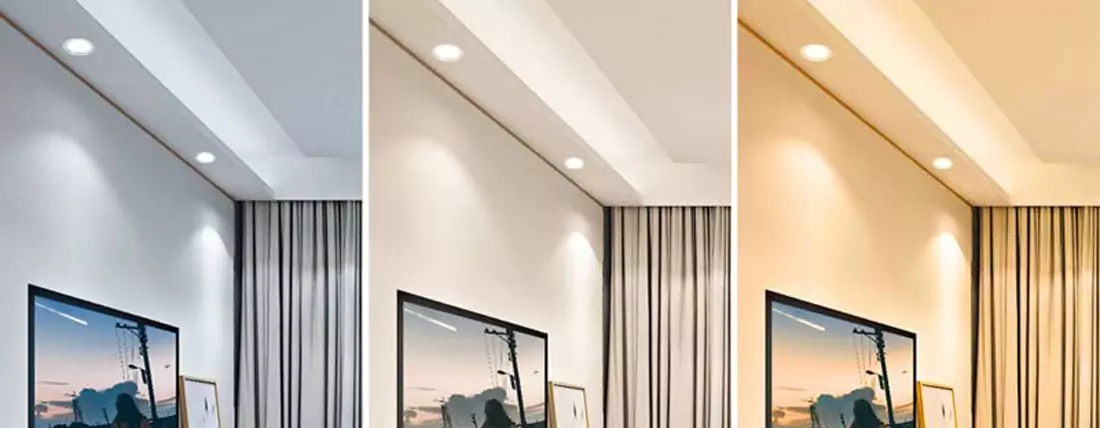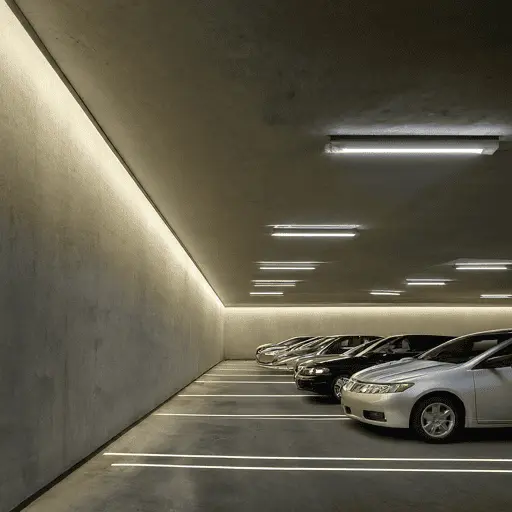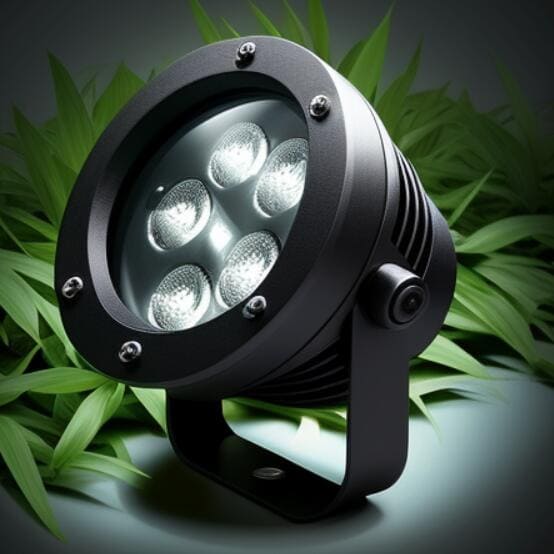Imagine this: you walk into a busy restaurant. The warm lights, the sound of people talking, and the smell of fresh food welcome you. Before you sit down, you know you’re going to have a great meal.
Creating the right atmosphere is important for a great dining experience. The lighting in a restaurant is key from the moment guests walk in. Lighting sets the mood, improves the look of a room, and affects how happy people are with the space.
Good lighting is important for creating a welcoming atmosphere in restaurants, whether they are cozy, elegant, or trendy. It sets the mood and enhances the dining experience.
Whether you’re starting a new restaurant, improving an old one, or just updating your lighting, this guide can help. It gives you the know-how and ideas to make your dining area really stand out. Let’s explore how to use restaurant lighting to create a memorable atmosphere.
Importance of Restaurant Lighting Design
The right lighting can really change how a restaurant feels and how people enjoy their food. It can make the food look better, change how people feel and act, and even make a meal seem worth more.
Enhancing the Dining Experience
A good lighting plan can make eating out better. Warm, close lighting can make a place feel cozy and romantic, making people want to stay longer and enjoy their food. But, bright and lively lighting can make a place feel energetic and fun, which is great for fast-food places or cafes.
Influencing Customer Behavior
The brightness and color of the lighting can influence customer behavior. Bright lights make customers move faster.This is beneficial for fast-food restaurants or coffee shops. These establishments want customers to leave quickly.
Dim lighting makes customers relax and stay longer, great for fancy restaurants or bars.
Light brightness and color can affect how customers act. Bright lights can make customers move faster, good for places like fast-food restaurants or coffee shops that want to turn tables quickly. On the other hand, dim lights can make customers relax and stay longer, great for places like fancy restaurants or bars.
Impact on Perceived Value
Lighting can change how we think about the value of a meal. A study discovered that individuals in restaurants with warm, cozy lighting believed the food tasted better. They also had a more enjoyable experience compared to those in bright, cold-lit restaurants.
Types of Lighting Fixtures for Restaurants
Choosing the right lighting fixtures is important for creating the right atmosphere and function in a restaurant’s design. Here are some key types of lighting fixtures commonly used in restaurants:
Ambient Lighting
Ambient lighting is the primary source of light in a restaurant. It provides a general level of illumination, helping customers see and navigate the space. Ambient lighting can be achieved through a combination of natural light and light fixtures. The goal of ambient lighting is to create a welcoming and comfortable atmosphere throughout the dining area.
Task Lighting
Task lighting is used in specific areas where additional light is needed to perform tasks. This could be in the kitchen, at the cash register, or at the tables where customers need enough light to read the menu. Task lighting can be in the form of overhead spotlights, pendant lights, or table lamps.
Accent Lighting
Accent lighting is used to draw attention to specific features or areas in the restaurant. It could be used to highlight architectural details, artwork, or menu boards. This type of lighting helps create visual interest and enhance the restaurant’s style and atmosphere.
Popular types of accent lights are track lights, wall sconces, and picture lights. They can highlight cool design parts of a restaurant, create main points of interest, and bring a dramatic or classy feel.
Decorative Lighting
Decorative lights are both useful and stylish, giving a unique feel to a restaurant’s look. These lights stand out in the restaurant and help create a pleasant and attractive environment. Decorative lighting fixtures include are chandeliers, pendant lights, wall lights, and fancy lamps. They let restaurant owners show their creativity and make the place more appealing with interesting designs.
Commercial Restaurant Lighting Solutions
Restaurants can use different types of LED lights to improve their lighting. Some commercial lighting solutions include versatile LED lights that can enhance the ambiance.
LED Strip Lights
LED strip lights are versatile and can be used for both ambient and accent lighting. They come in various colors and brightness levels, allowing restaurants to create the desired mood and ambiance.
Neon Lights
Neon lights can add a pop of color and a fun, retro vibe to a restaurant. They are perfect for highlighting the restaurant’s name or logo or creating an eye-catching display.
Recessed Lights
Recessed lights provide a significant amount of lighting and can diffuse light throughout the space. They are perfect for providing ambient light or task lighting in specific areas.
Track Lighting
Track lighting is a flexible option that can provide various lighting solutions for any area of the restaurant. The individual lights can position in different directions, allowing for multiple focal points from the same source.
Smart Lighting
As technology continues to evolve, smart lighting systems have become more accessible and easier to incorporate into restaurant designs. These systems can feature automatic shut-off, dimming control, and motion sensors, providing efficient and customizable lighting solutions.
Key Considerations in Restaurant Lighting Design
Designing the lighting for a restaurant includes several key considerations. These contain the type of restaurant, the size of the space, the color scheme, and the desired ambiance etc.
Type of Restaurant
The type of restaurant significantly influences the lighting design. A fast-food restaurant will have different lighting needs compared to a fine dining establishment. The former may require bright, energetic lighting, while the latter may benefit from softer, more intimate lighting. Here are some general restaurant type for reference:
| Restaurant Type | Lighting Request |
|---|---|
| Fine Dining | Soft, warm lighting with elegant fixtures |
| Casual Dining | Bright, welcoming lighting for a relaxed ambiance |
| Bistro/Café | Cozy, intimate lighting with a touch of rustic |
| Bar/Lounge | Dim, atmospheric lighting with accent highlights |
| Outdoor/Patio Dining | Soft, warm lighting with a hint of twinkle |
| Ethnic/Theme Restaurant | Vibrant lighting that complements the theme |
| Family-Friendly | Bright and well-lit for a lively and inviting feel |
Size of the Space
The size of the restaurant also plays a role in the lighting design. Large restaurants may require more lighting fixtures to ensure adequate illumination, while smaller restaurants may need fewer, strategically placed lights.
Light Color for Restaurant Lighting
The light color of the restaurant should be taken into account when designing the lighting. Light colors reflect light, making the space appear brighter and larger. In contrast, dark colors absorb light, creating a more intimate and cozy atmosphere.
Desired Atmosphere
The desired atmosphere is a crucial factor in restaurant lighting design. Whether you want to create a romantic, sophisticated, energetic, or relaxed atmosphere, the lighting can play a significant role in achieving this.
Remember to consider outdoor lighting
Suitable outside lighting can make the restaurant stand out and show that it’s open. The lights should make the building look good, and be bright enough to make people feel safe and prevent accidents.
Natural Light Integration
1. Make your restaurant more inviting by utilizing natural light. Consider using large windows, skylights, or glass walls for maximum daylight.
2. Plan your restaurant layout to ensure tables receive plenty of light. Try positioning seats near windows or outside, enhancing the dining experience with sunlight.
3. Remember that natural light is beneficial for customers. It can boost mood, increase focus, and improve food’s visual appeal.
4. Use natural light as an energy-saving strategy. Using sunlight instead of artificial lights during the day can reduce electricity usage, saving money and benefiting the environment.
5. Maximize the use of natural light by considering the sun’s position throughout the day. Place crucial areas like dining spaces or the bar where they will receive the most light.
6. Control the amount of sunlight entering your restaurant by using curtains or blinds on windows.
7. Incorporate natural light to keep your restaurant fresh and lively, creating a more welcoming atmosphere and enhancing the dining experience for your guests.
Restaurant Lighting Layouts
A well-planned lighting layout not only illuminates the space but also enhances the atmosphere, highlights key features, and guides the flow of diners through the restaurant. Here are some essential principles to consider when designing your lighting layout:
• Layered Lighting: This is a key consideration in restaurant lighting design. Using different types of light together, including ambient, task, accent, and decorative lighting, you can create depth, dimension, and visual interest within the space.
Layered lighting allows you to adjust the light in different parts of the restaurant for different activities. This makes the dining experience more engaging and fun.
• Zoning: Divide your restaurant into distinct lighting zones based on the desired ambiance and functionality of each area. For example, you may want to create a cozy and intimate atmosphere in the dining area, while the bar or lounge area may require brighter and more energetic lighting.
Zoning allows you to customize the lighting levels and characteristics to suit the specific needs of each space, enhancing the overall ambiance and functionality of the restaurant. Below are some different zones and required brightness for review:
| Different Areas of Restaurant | Suggested Brightness (Lux) |
|---|---|
| Dining Area | 150-250 |
| Bar/Lounge Area | 50-100 |
| Reception/Entrance | 200-300 |
| Restrooms | 100-200 |
| Kitchen | 500-1000 |
| Walkways/Corridors | 100-200 |
| Outdoor/Patio Area | 50-100 |
Please note that these suggested brightness levels are general guidelines and can vary based on the specific design, theme, and atmosphere of your restaurant. It is advisable to consult with a lighting professional to determine the optimal brightness levels for each area of your establishment.
• Balance and Harmony: Achieving balance and harmony in your lighting layout is essential for creating a cohesive and visually appealing environment. Balance the intensity, color, and distribution of light throughout the restaurant to ensure that no area feels too bright or too dim.
Harmonize the various layers of light to create a seamless transition between different lighting zones, allowing diners to move effortlessly through the space without experiencing any jarring contrasts or inconsistencies.
• Flexibility and Adaptability: Design your lighting layout with flexibility and adaptability in mind to accommodate changing needs, themes, and occasions within the restaurant. Incorporate lighting controls, such as dimmer switches, programmable timers, or smart lighting systems, that allow you to adjust the light levels and create different atmospheres throughout the day or in response to specific events or promotions.
Flexibility in lighting design ensures that your restaurant can easily transition from a cozy dinner setting to a lively cocktail hour or special event without compromising on ambiance or functionality.
Conclusion
Whether you’re starting a restaurant or you’re a seasoned owner, lighting is crucial. It affects the whole customer experience, from arrival to departure.
In conclusion, designing the lighting in a restaurant is not just about adding lights. You need to think about the restaurant type, the size of the area, the colors used, and the atmosphere you want to create. By making good choices with these in mind, your lighting can improve the dining experience, change how customers act, and make the meal seem worth more.
Right lighting can make your restaurant feel warm and inviting. It can draw in customers and make them want to come back. No matter the mood you’re aiming for – romantic, classy, lively, or chilled out – the right lighting design can help you achieve it.
If you’re planning a new restaurant or updating an old one, reach out to our team today for advice and solutions that match your restaurant’s unique needs and goals.
FAQ
Q: What kind of lighting is best for a restaurant?
A: The best type of lighting for a restaurant depends on the desired atmosphere and theme. A combination of ambient, task, and accent lighting is commonly used. Consider using warm, dimmable LED lights that offer flexibility, energy efficiency, and excellent color rendering.
Q: How many lumens per square foot for a restaurant?
A: How bright should a restaurant be? It depends on what you want. Generally, 20-50 lumens per square foot is used for dining areas. But, you also need to think about the colors used, the mood you want to set, and the type of lights.
Q: What is the lighting psychology in the restaurant?
A: Lighting psychology in a restaurant involves understanding how different lighting elements can influence customers’ emotions, behavior, and overall dining experience. Lighting can create a cozy and intimate setting, enhance the presentation of food, and guide customers through the space. Proper lighting design can evoke positive emotions, encourage relaxation, and even influence the perception of taste.
Q: Why do fancy restaurants have dim lighting?
A: Fancy restaurants often have dim lighting to create an intimate and sophisticated ambiance. Dim lights can make a place feel private and fancy. They also help in creating a calm atmosphere. This helps customers focus on their food and enjoy a cozy meal.
Q: What color of light should you use in your restaurant?
A: The color of light used in a restaurant depends on the desired atmosphere and theme. Warm white or soft white lighting is commonly used as it creates a cozy and inviting ambiance. However, different areas within the restaurant might benefit from different color temperatures. For example, warmer colors can be used in dining areas, while cooler colors may be suitable for bar or lounge areas.
Q: Which lamp color is considered best for a restaurant or dining area?
A: For a restaurant or dining area, it is generally recommended to use warm white or soft white lamp colors. These colors create a warm and comfortable atmosphere, complementing the dining experience. Warmer tones enhance the richness of wood or earthy decor, while still allowing the colors of food and beverages to appear vibrant and appetizing.
Q: What type of interior illumination should I choose for a restaurant?
A: When choosing interior illumination for a restaurant, a combination of general, accent, and task lighting is typically utilized. General lighting provides overall illumination, while accent lighting highlights specific areas or features. Task lighting ensures functional lighting for tasks such as food preparation or reading menus. Balancing these types of lighting creates a dynamic and visually appealing restaurant environment.
Q: How many lights do I need?
A: The number of lights needed in a restaurant depends on various factors such as the size of the space, the height of the ceiling, the desired lighting levels, and the type of lighting fixtures being used. It’s recommended to consult with a lighting professional who can assess your specific requirements and provide a tailored lighting plan.
Q: How can I find the best lights for my restaurant?
A: To find the best lights for your restaurant, consider factors such as the desired ambiance, energy efficiency, durability, and compatibility with your interior design. Research different lighting manufacturers, read customer reviews, and consult with lighting experts who can provide recommendations based on your specific needs and budget.
Author
-

I'm Joseph, the Co-founder of CST Lighting, bringing over a decade of expertise in the LED lighting industry. With a strong focus on product marketing, I am dedicated to staying at the forefront of market trends, constantly enhancing my knowledge and skills to deliver top-notch products and services to our clients. Through our insightful blog posts, we strive to share our expertise, guiding readers through the ever-evolving landscape of LED lighting. Learn more via my linkedin profile https://www.linkedin.com/in/ledcst-joseph/
View all posts


